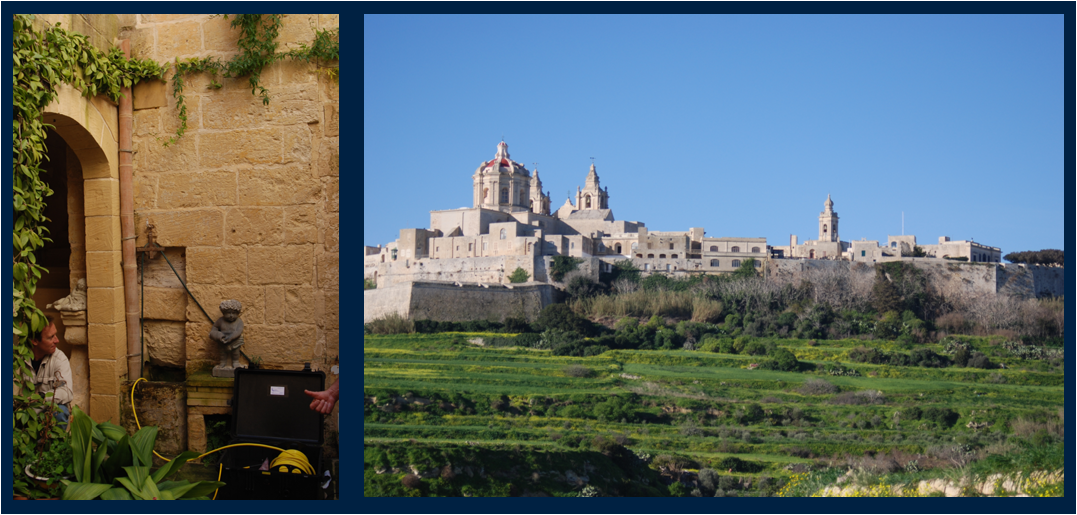A History of Mdina
By K. Farrugia
The old capital of Malta, also known as Melite and Citta Notabile. The earliest date recorded for the city is the Bronze Age, c. 2000BC. In 1962 beneath the rear courtyard of the Vilhena Palace and on the slope at the foot of the fortifications to the east of the city, Middle Bronze Age pottery was discovered amongst the Roman period remains. More recently, in 2005, Bronze Age deposits were unearthed during excavation works in front of the Cathedral.
Whilst Phoenician and Punic remains were unearthed, there is no indication to what the city looked like at the time, unlike during the Roman period, for which archaeological evidence clearly indicates that the city of Melite included a large part of Rabat. It extended to the present day Parish Church of St Paul, behind which, there are the remains of the ditch of the old city. This part of the ditch has been preserved as private gardens. The ditch extended to the other side of Rabat, namely the Gheriexem area, in fact, the present Day St Rita Street, is built on the site of the ditch. The extent of the old city is also determined by the large number of hypogea and tombs, which were located outside the city walls. Various Classic remains exist, although not all discoveries survive. Most notably are the lower courses of the bastion walls, which are visible in the square just off Greek's Gate, within the Magesterial Palace. Excavations in Villegaignon Street, St Paul's Sqaure and next to the Xara Palace have all revealed Roman remains, including structures.
The city was reduced to its present day size during the Arab occupation from 870AD. Various buildings dating from the Medieval Era still survive today, including Palazzo Gatto Murina, the ground floor of Palazzo Santa Sofia, Palazzo Inguanez, and also a number of town houses to the south of the city. Fortification walls dating to the medieval period also survive and can be seen to the east of the city, namely, beneath Xara Palace. These are characterized by straight high walls.
After the earthquake of 1693, which destroyed about half of the city, much of the city was rebuilt, including its present day Baroque Cathedral. However, the 18th century rebuilding of the city, followed the late medieval layout. Today, Mdina is a scheduled Grade 1 site due to its Military historic Value and is an Area of High Landscape Value. It is commonly known as the Silent City.
California Polytechnic State University
University of Malta
